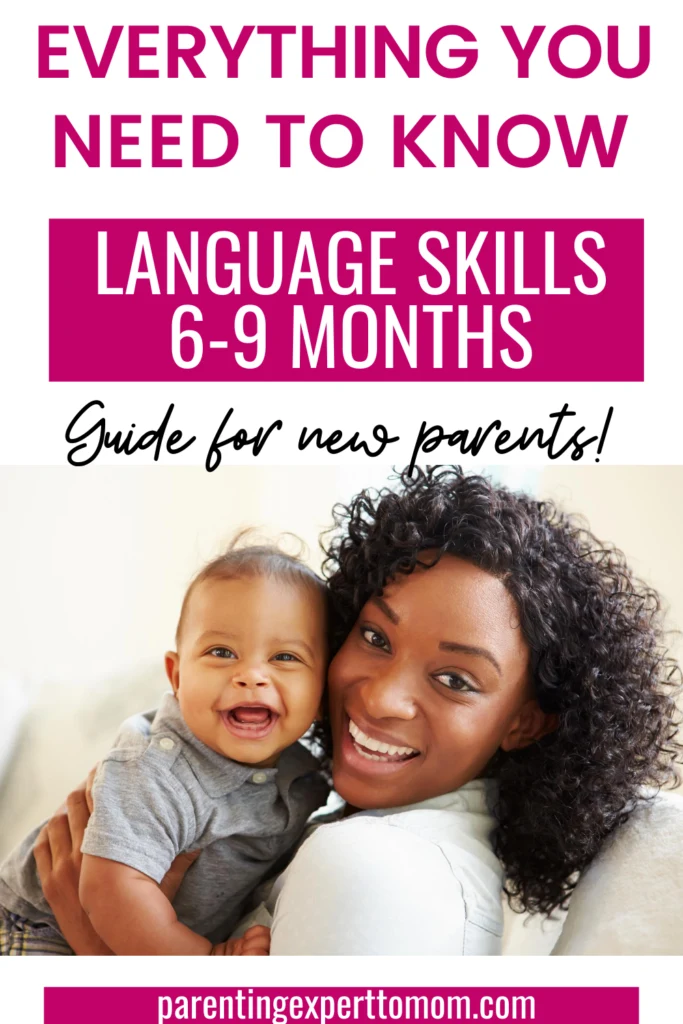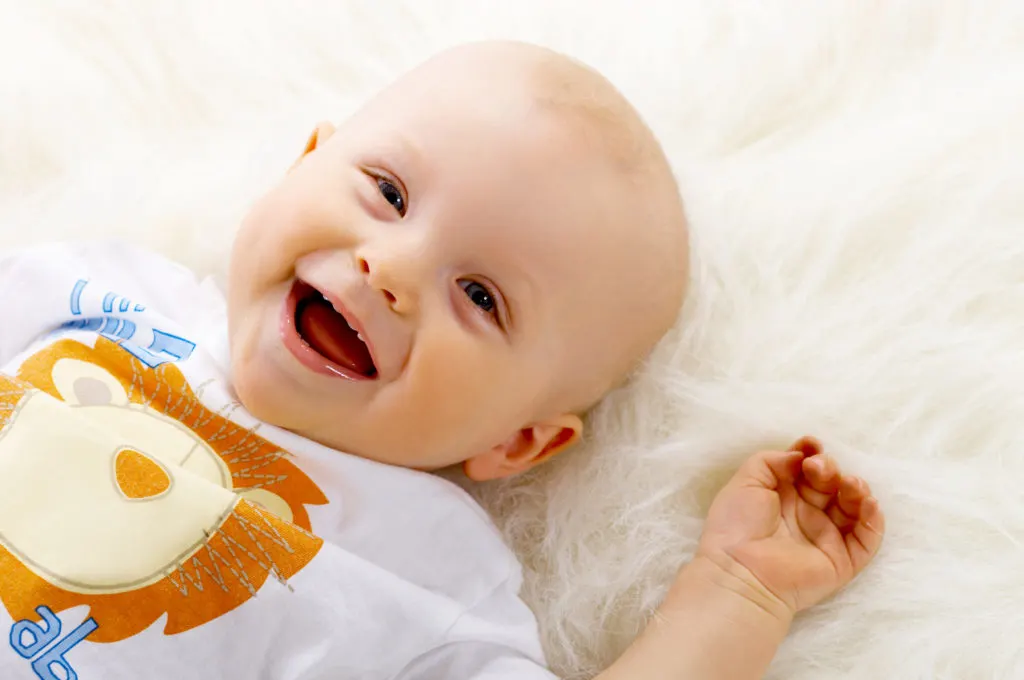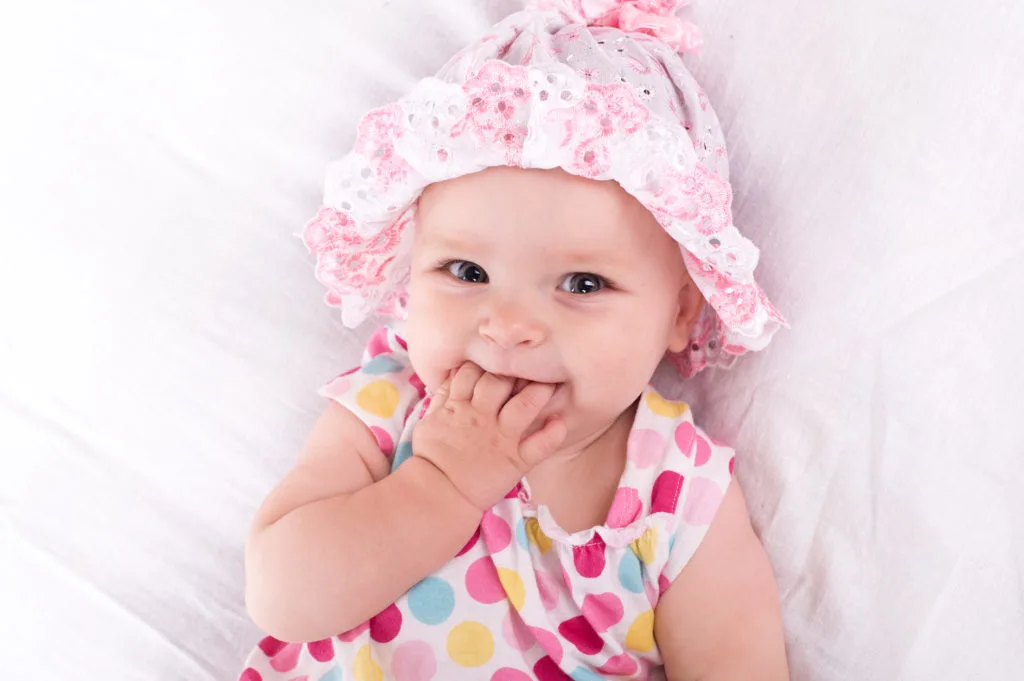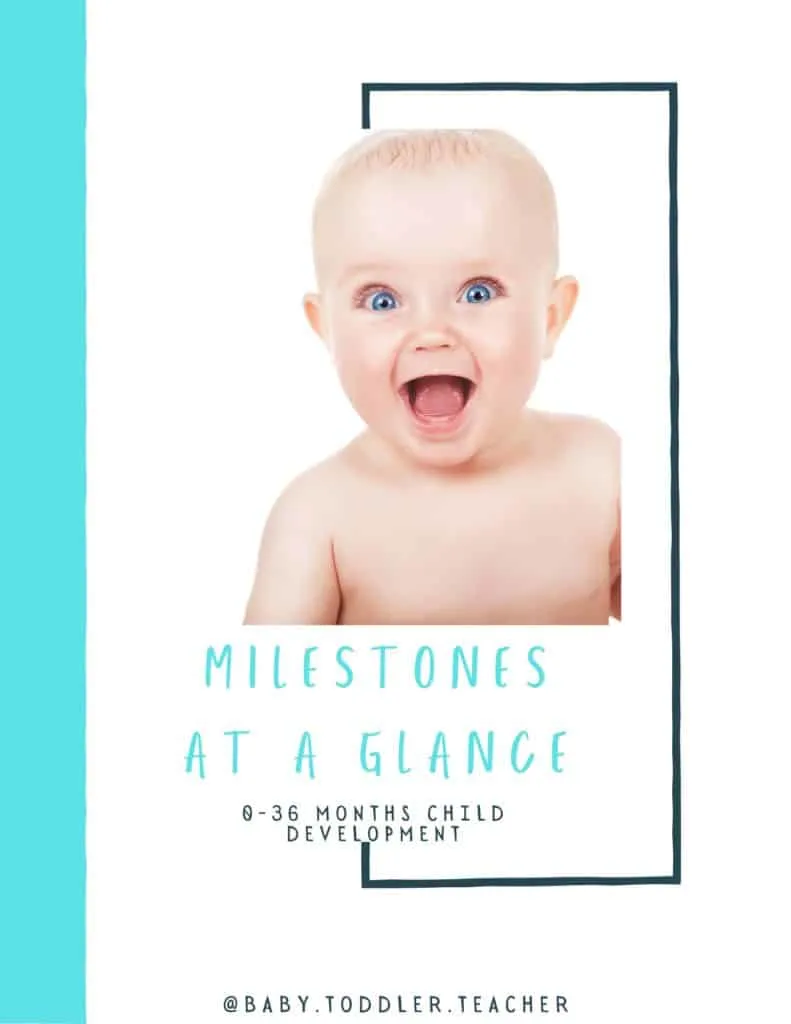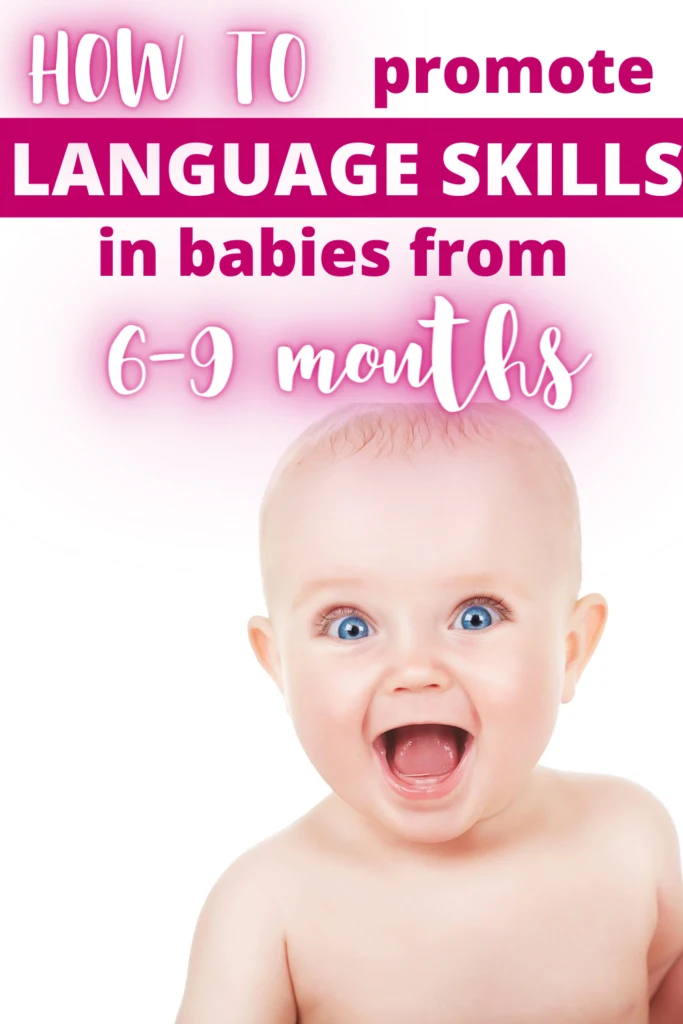Your baby has been listening, watching, and learning the last 6 months to figure out how to make sounds and communicate.
They started off mainly communicating by crying but that is about to change.
6-9 Months communication development includes lots of new skills that will help your baby learn and interact with the world around them.
6-9 Months Communication Development Guide for New Parents
6-9 Months Language Skills Include:
Baby Waving “Hi” and “Bye”
Gestures are typically easier for your baby to imitate than sounds and words.
Waving “hi” and “Bye” is something that we usually do at least once, if not multiple times a day.
You may find your little ones wave may look a bit different at first as they may not be able to fully control this fine motor movement.
You can help your baby learn this skill by modeling it for them throughout the day and also helping them hand over hand if they will allow you to.
Shouting for Attention
Why is my baby screaming for no reason?
There actually is a reason as this is a very important stage of language development.
Your baby is shouting or screaming for attention because they are learning how their voice works and you react.
It is them learning cause and effect and how to communicate effectively.
They are also experimenting with their voice which allows them to learn how to make a variety of different sounds.
Baby Babbling to People
Does it seem like your baby is trying to talk to you?
Their sounds may be changing a bit from the small throaty sounds and cooing to babbling using different chains of vowels and consonants.
Some of the first sounds you may hear your baby use are “B” “M” and “P”.
You may notice them babbling at certain people and sights as well.
How can I encourage communication development in my 6-9 month baby?
Teaching Baby to Wave
One of the best things you can do when it comes to teaching your baby to wave is to find opportunities to practice.
For example you can wave to the mailman.
This is a perfect way to work practice into your routine every single day.
Another great opportunity is when you are out for a walk or at the grocery store.
When you are putting toys away wave to them and say “bye bye”.
Don’t force your baby to wave if they don’t want to.
Instead model the skill and take off the pressure.
Encourage Baby Babble
There are a few different ways that you can encourage baby babbling during daily routines and play time.
One way is to model babbling for them.
For example, you can model sounds like “ba ba ba” or “da da da” while changing your baby.
Give them some wait time and then see if they try to imitate.
You can also allow your baby independent play time where they can just babble to themselves to practice sounds.
Letting your baby play with an unbreakable mirror (like this one) allows your baby to see what they look like as they move and make sounds which can be very motivating.
Here are some other toy ideas for babies 6-9 months that will help encourage learning through play.
You can also encourage babbling by responding to your baby and having a “babbling conversation.”
Let them know that you understand that they are trying to communicate with them and respond back to their sound and babbles.
Sing Songs and Fingerplays
Singing is a great way to encourage language skills because of its repetitive nature.
It allows babies to hear the sounds that they need to learn over and over again naturally.
Singing is also very entertaining for babies so it motivates them to pay attention as they are naturally curious.
You can read more about the benefits of singing to your baby HERE.
Using action songs or fingerplays can also be helpful as gestures tend to be easier to imitate at first.
Use Baby Signs
This is a great age to start modeling baby signs during playtime or daily routines.
You can start of with just a couple at a time and gently take their hands to show them how to do it.
There are so many benefits to using signs with babies.
It is also important to note that using sign language will not delay speech development.
Frequently Asked Questions
Your baby with use a variety of ways to communicate their needs and wants. Often times they communicate through body language. For example your baby may rub their eyes which indicates their tired.
They may also use screaming or shouting sounds to gain your attention.
Your baby may look at or vocalize towards toys or desired objects.
Crying may also be used as a way to communicate wants and needs before your baby has words.
Your baby may say “mama” or “dada” non-specifically sometime between 7-12 months.
Babies usually start babbling using consonant sounds sometime around 6 months.
Want to learn more about your 6-9 month old baby?
Click on the links below to learn all about 6-9 month old child development
Physical Development 6-9 Months
Social Emotional Skills 6-9 Months
Intellectual Development 6-9 Months
Grab your FREE Milestone Guide HERE.
CLICK HERE TO GRAB YOUR BABY 0-12 MONTHS CHECKLIST
Related Posts You Will Enjoy
Best Baby Toys for Fine Motor Skills
When do babies hold their own bottle?
Easy Math Activities for Infants
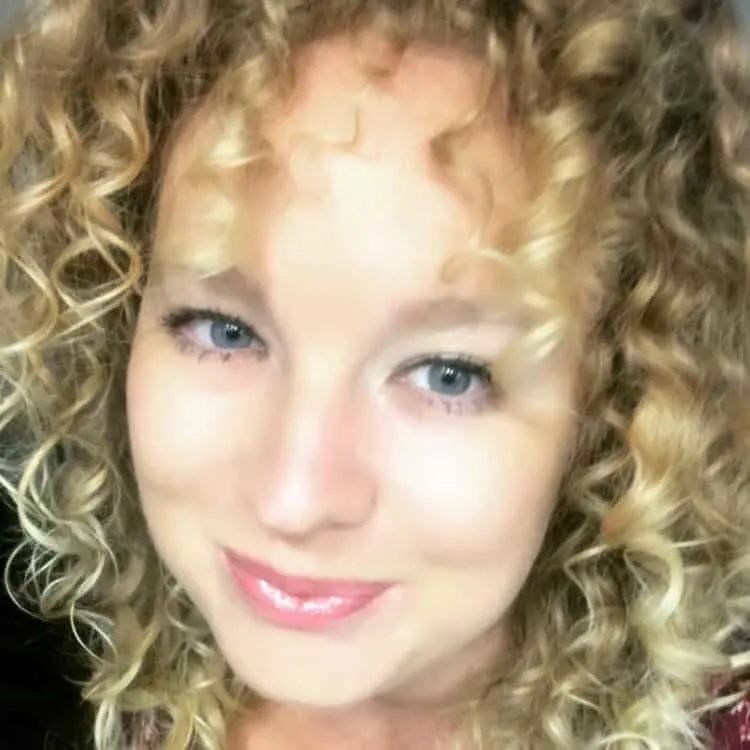
Kayla O’Neill has a master’s degree in education as well as a bachelor’s degree in special education with an emphasis in early childhood education. She has been working as a developmental therapist with babies and toddlers in early intervention since 2012. She is also a mom with two young children.
